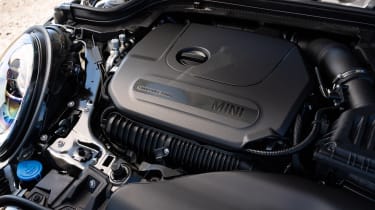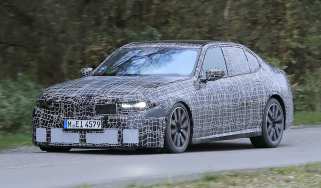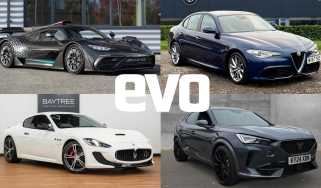Mini Cooper review – engine, gearbox and technical highlights
Combustion engines are now petrol-only; gearboxes are six-speed manual, seven-speed DCT or eight-speed torque-converter automatics
Both the three- and five-door models share the same engine and gearbox choices, but all are front-wheel drive, driven through either a six-speed manual or one of two automatic transmissions. The manual is preferable, its shift quick and pleasingly accurate, while Mini’s pedal spacing is such that heel-and-toe accelerator-blipped downshifts are easy to master. Cooper models utilise a seven-speed dual-clutch, and it’s swift enough, even if it’s prone to the odd bout of confusion, though you can always take over via wheel-mounted paddles if you want to get more involved. If the manual isn’t your thing, the Cooper S is available with the dual-clutch. Meanwhile, the full-house JCW gets the manual ’box, or an Aisin-sourced torque-converter on account of its higher torque figure.
The four-cylinder in the Cooper S is substantially more powerful than the entry-level three-door, producing 176bhp with 206lb ft of torque. In this application, the Mini’s thick spread of torque makes light work of the 1235kg weight figure, although again, the engine’s lack of top-end pizazz means the Cooper S is no longer the standout supermini hot hatch it used to be. The JCW builds on this with its subtle power increase, but at this tune starts making those front tyres need to work for their supper.
The Mini Electric’s 181bhp looks great on paper, and its instant torque does actually make it feel the most frisky model in the range, but it does lose out to both the Cooper S and JCW when up and running on account of its extra weight.




